Providing Comforts and Conveniences—Constructed Features
Constructed features are the site furnishings and other elements provided in picnic areas, campgrounds, and other recreation sites. The requirements for constructed features are addressed in sections 3, 4, and 5 of FSORAG. Section 3 "Recreation Sites" addresses the layout of recreation sites, including vehicle parking, camping and picnic units, viewing areas, and use of the international symbol of accessibility and other signs. Section 4 "Constructed Features in Recreation Sites" addresses individual site amenities, including picnic tables; fire rings; fire grills; fireplaces; wood stoves; tent pads and platforms; trash, recycling, and other essential containers; telescopes and periscopes; utilities; water hydrants; utility sinks; and outdoor rinsing showers. Section 5 "Buildings in Recreation Sites" addresses requirements for buildings that are not included in ABAAS, such as camp shelters and pit toilets. These subjects will be addressed in the same order in this document.
Construct, purchase, and install only elements and constructed features that comply with the accessibility guidelines, as directed by the Forest Service policy of universal design. For example, even if steep terrain or other conditions in an alteration project at a recreation site preclude complying with the slope requirements for the outdoor recreation access route to a picnic table or camping unit, all the components and furnishings still must comply with the relevant sections of FSORAG. Individuals can select the location where they want to picnic or camp without being limited by the location of accessible features of the picnic or camping unit. This requirement includes all picnic tables, pedestal grills, and other features in a picnic area or campground if they are purchased or constructed by or on behalf of the Forest Service. The few exceptions to this general rule are explained in the section for each feature.
Construction Tip
Determine if features are really accessible
Manufacturers don't necessarily understand accessibility requirements. Some manufacturers advertise their products as "accessible" or "Americans with Disabilities Act compliant," even though they aren't. Accessible means a product is in compliance with the applicable accessibility requirements. Compare the dimensions of the product to the applicable Architectural Barriers Act Accessibility Standards or Forest Service Outdoor Recreation Accessibility Guidelines requirements to make sure that a product, such as a picnic table or fire ring, is truly accessible. Ask the manufacturer for the shop drawings or for the location of a retailer or campground near you where you can examine the product.
When individual elements and constructed features wear out or are damaged and must be replaced, the Forest Service requires that the renovated or replaced elements or features be accessible. However, if the ground under the element isn't changed, this work doesn't trigger the surface and slope requirements for clear floor and ground space.
FSORAG doesn't require that any particular constructed feature be provided in a picnic area or campground. If there were no plans to provide outdoor rinsing showers, utility sinks, or utility hookups at a campground, FSORAG wouldn't require them to be installed. However, if a feature is provided, FSORAG must be met.
Construction Tip
Fix it while you’re there.
Bringing the surface and slope of the ground under an individually replaced element or constructed feature up to new construction standards isn't required. However, you may be able to save time and money over the long haul by shaping and smoothing the surface before putting in the new table. If you integrate logical improvements every time you replace a component, accessibility may be achieved without a large construction project.
Design Tip
How to design features that are not addressed in Forest Service Outdoor Recreation Accessibility Guidelines.
If you want to provide a constructed feature that isn't addressed in Forest Service Outdoor Recreation Accessibility Guidelines (FSORAG), design it using the basic building blocks of accessible design, including clear space dimension requirements for a wheelchair and reach ranges found in Architectural Barriers Act Accessibility Standards (ABAAS).
For example, lantern hooks are sometimes provided in campgrounds, but FSORAG doesn't address them. Using the information in ABAAS and the principles of universal design, design the hooks to be usable by the greatest number of campers. The hooks should be placed within the reach of a person who is seated, as well as a person who is standing.
Use a hinged device to adjust the height of the hook or install two hooks at different heights. Consider safety when designing a post with multiple or adjustable hooks. Ensure the lantern hook has appropriate clear space to allow a person in a wheelchair to approach it from the front or the side, and place the hook where it will not create an obstacle to people moving around the campsite. The clear space for the lantern hook shouldn’t overlap the outdoor recreation access route.
Clear floor or ground space is required around the usable sides of each constructed feature, but the size of the clear space varies with the feature. The differences are based on how each feature is used and whether users need to approach just one side of the feature or all sides of it. For instance, users may only need to get to the front of a pedestal grill that doesn't rotate or to the front and sides of a water hydrant, but they need to get to all sides of a picnic table or fire ring.
When several constructed features are grouped together, such as in a camp living area or picnic unit, their clear spaces may overlap. For example, the 48-inch (1,220-millimeter) clear space around a picnic table may overlap the 48-inch (1,220-millimeter) clear space around a pedestal grill. Do not allow the clear space at a constructed feature within a camp living area or picnic unit to overlap the outdoor recreation access route that connects the camp living area or picnic unit to the rest of the recreation site. Also, do not allow the clear space to overlap any outdoor recreation access route that is adjacent to the camp living area or picnic unit but leads to a common use feature, such as a water hydrant.
Ensure that individual constructed features, such as water hydrants, are connected by outdoor recreation access routes in developed recreation sites, by beach access routes on beaches, and by trails when features are located along a trail. More information about connectivity requirements is provided in the parts of the guidebook on recreation site layout and constructed features.
Within individual camp living areas or picnic units, the slope, surface, and size of the required clear spaces of individual constructed features usually provide the required connectivity and eliminate the need for separate outdoor recreation access routes. The overlapping or adjacent clear spaces function as the outdoor recreation access routes, beach access routes, or trails. Sometimes features are spread apart to limit the amount of change to the natural setting, and the clear spaces for individual features are not adjacent or overlapping. In these cases, provide the appropriate outdoor recreation access routes, beach access routes, or trails to connect the features.
Reach Ranges and Operability Requirements
In this guidebook, you will see the provision "Controls and operating mechanisms must comply with the requirements for reach ranges and operability specified in ABAAS, sections 308 and 309" whenever a site feature has buttons, knobs, handles, or other controls or operating devices. One of the basic principles of universal design and accessibility is to provide controls that most people can reach and use.
Design Tip
Understand forward reach and side reach terminology.
When the phrases "forward reach" and "side reach" are used in the context of accessibility, they don't refer to the object a person is trying to reach. They refer to the position of the person doing the reaching. A forward reach means that the person is facing the object and reaching forward toward it (figure 50). A side reach means that the person's side is closest to the object, and the person is reaching either to their right or left towards the object (figure 51). People using wheelchairs can't reach as far forward over their laps as they can reach to the side. They also need correctly sized spaces to position their wheelchairs to be able to reach objects from the front and from the side. That is why there are different height and clear floor space requirements for forward and side reaches.
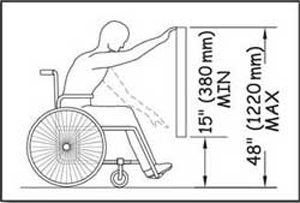
Figure 50—The requirements for unobstructed forward reach.
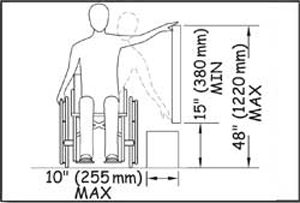
Figure 51—The requirements for unobstructed side reach.
ABAAS, section 309 requires that controls and operating mechanisms be operable with one hand without tight grasping, pinching, or wrist twisting, using a force no greater than 5 pounds (2.2 newtons). To test a control, try operating it by applying light force with one closed fist, without bending your wrist.
Section 308 of ABAAS identifies the following reach requirements:
-
Unobstructed Reaches—When a forward or side reach is unobstructed, the object to be reached must be no higher than 48 inches (1,220 millimeters) and no lower than 15 inches (380 millimeters) above the floor or ground (figures 50 and 51). For side reaches only, an object that is below the object to be reached and isn’t more than 10 inches (255 millimeters) wide doesn't count as an obstruction.
-
Obstructed Forward Reach—When an object must be reached over an obstruction, the clear floor space must extend beneath the obstruction for at least as far as the reach depth over the obstruction. The object to be reached is not allowed to be under the obstruction. If the obstruction is 20 inches (510 millimeters) deep or less, the object to be reached must be between the top of the obstruction and 48 inches (1,220 millimeters) above the floor or ground (figure 52). If the obstruction is more than 20 inches (510 millimeters) deep, the object to be reached must be between the top of the obstruction and 44 inches (1,120 millimeters) above the ground or floor (figure 53). The obstruction must not be more than 25 inches (635 millimeters) deep.
-
Obstructed Side Reach—For side reaches, obstructions must not be more than 34 inches (865 millimeters) high or 24 inches (610 millimeters) deep. The object to be reached is not allowed to be under the obstruction. If the reach depth is 10 inches (255 millimeters) or less, the object to be reached must be 48 inches (1,220 millimeters) or less above the ground or floor (figure 54). If the reach depth is between 10 and 24 inches (255 and 610 millimeters), the object to be reached must not be more than 46 inches (1,170 millimeters) above the floor or ground (figure 55).
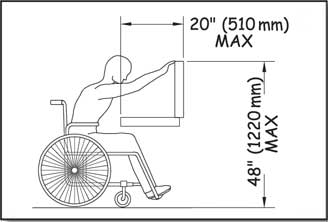
Figure 52—The requirements for obstructed high forward reach, narrower obstacles.
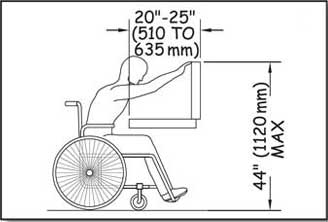
Figure 53—The requirements for obstructed high forward reach, wider obstacles.
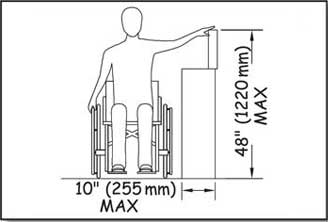
Figure 54—The requirements for obstructed high side reach, narrower obstacles.
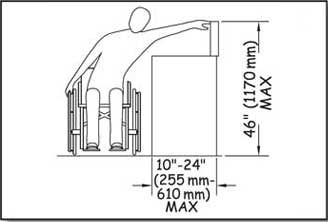
Figure 55—The requirements for obstructed high side reach, wider obstacles.
Grab Bars
Grab bars are usually provided in buildings to provide stability and allow people to use their arms to assist in movement over short distances. The most common location for grab bars is in restrooms. Grab bars must comply with the reach range requirements of ABAAS, section 308, as explained in "Reach Ranges and Operability Requirements." They must also comply with the size, strength, finish, and position requirements in ABAAS, section 609 as follows:
-
Grab bars with circular cross sections must have a diameter no less than 1¼ inches (32 millimeters) and no more than 2 inches (51 millimeters). Grab bars with noncircular cross sections must not be more than 2 inches (51 millimeters) across and must be 4 to 4.8 inches (100 to 120 millimeters) around. Figure 56 shows how this is measured.
-
Grab bars and any wall or other surfaces adjacent to grab bars must have rounded edges and are not allowed to have sharp or abrasive surfaces.
-
Grab bars must be installed so they don't rotate within their fittings.
-
Grab bars have to be strong enough to support 250 pounds (1,112 newtons) of pressure at any point on the grab bar, fastener, mounting device, and supporting structure.
-
The space between the wall and the grab bar must be 1½ inches (38 millimeters). There must also be a space of 1½ inches (38 millimeters) between the grab bar and any projecting objects below or at the ends of the grab bar. There must be at least 12 inches (305 millimeters) between the grab bar and any projecting objects above it, except multiple grab bars only have to be 1½ inches (38 millimeters) apart.
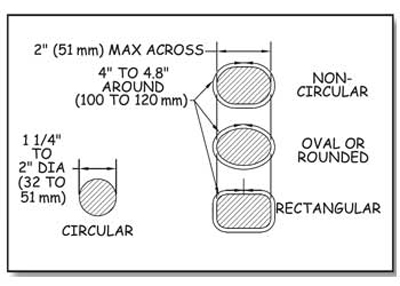
Figure 56—The requirements for the diameter and circumference of grab bars.

User Comments/Questions
Add Comment/Question